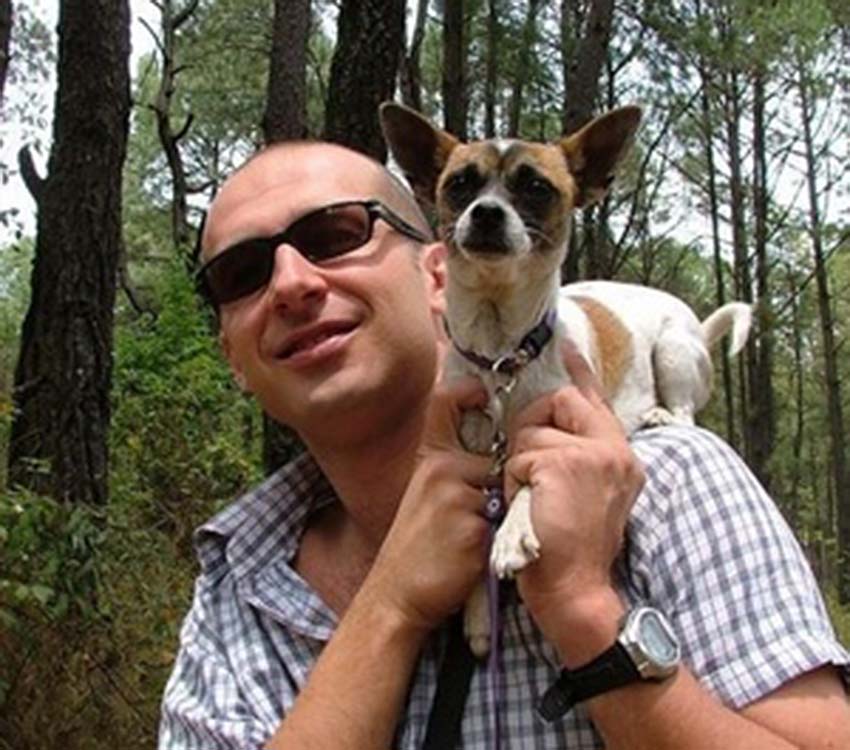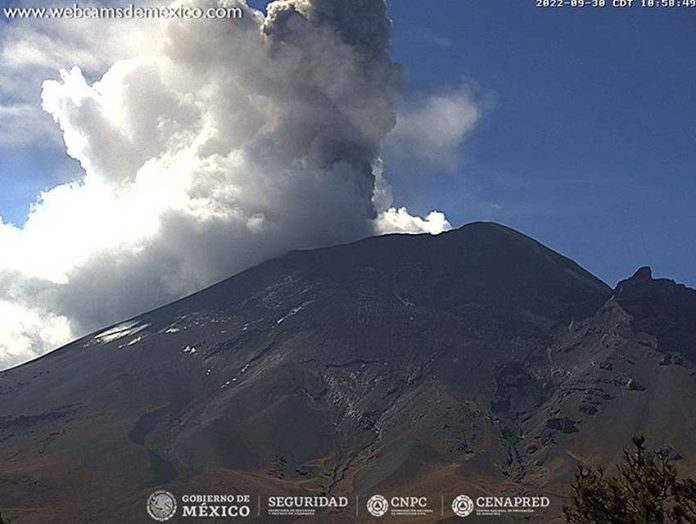If you follow the news in Mexico online, you may have noticed that when disasters strike and the Mexican online newspapers run video footage of a hurricane pounding the beaches of Cancun or an earthquake shaking Mexico City or a volcano spewing lava, one name consistently pops up: Webcams de México.
Webcams de México’s stationery cameras captured two out of three of those sorts of events last week: after the September 19 earthquake that was felt from its epicenter in Michoacán as well as in 11 states.
Their webcams captured views of the earthquake happening and its damage in places like Mexico City, Michoacán and Colima. It also captured the odd “earthquake lights phenomenon”— flashing lights in the sky — that occurred over Mexico City as a result of another 6.9 magnitude earthquake a few days later.
Meanwhile, Webcams de Mexico’s cameras, trained on volcanos around the country, also were capturing activity at the iconic Popocatépetl Volcano and the Colima Volcano.
Webcams de México captured footage of “earthquake lights” over Mexico City last week.Así se vieron las luces en el cielo de Ciudad de México #CDMX durante el #sismo magnitud 6.9 de esta madrugada, 1:16 horas #22deSeptiembre2022 .
Vista Oriente desde @Miralto Torre Latino.
Para ver en vivo:https://t.co/Yctth8F3tS
Video pic.twitter.com/uDdP0TlVKn
— Webcams de México (@webcamsdemexico) September 22, 2022
Government officials use the website’s 140 cameras in 62 locales around Mexico as a resource for emergency management. In 2015, when record-setting Patricia, the world’s strongest tropical cyclone ever in terms of wind speed, passed through Mexico, causing at least US $462 million in total damage, the federal government used the website to track the storm’s impact on the Yucatán Peninsula.
When Mexico isn’t facing an emergency, the website’s real purpose is to show Mexicans — and anyone else around the globe — views of the country’s beauty from Colima to Chiapas. This includes Pueblos Mágicos; zócalos of major cities, from Mexico City to Morelia; and Mexico’s beaches in places like Acapulco, Huatulco, and Cancún and Cozumel.
So who or what entity created Webcams de Mexico, you may ask? Perhaps the Tourism Ministry? Was it the brainchild of a proud Carlos Slim-like Mexican billionaire with plenty of time and money to set up so many cameras in so many places?
Interestingly, Webcams de Mexico wasn’t set up by the Mexican government. It wasn’t even set up by a Mexican. It was the idea of an Italian man who first came to Mexico on a visit to a friend.

The story of Webcams de México began in 2006, when Italian Nicola Rustichelli came to Urupan, Michoacán. While staying with a friend, he met the love of his life, a Mexican named Cristina Heredia. Rustichelli decided to stay in Mexico and the two married and eventually became business partners in Webcams de México.
Rustichelli told the newspaper El Pais that he noticed in his first years here that Mexico didn’t have webcams transmitting images of video from iconic landscapes or tourist destinations, as was common by then in Europe. He decided the country he had fallen in love with could use to show off a little.
His first camera was installed atop a friend’s house in Monterrey that had a view of most of the city. Soon after, he struck a deal with Monterrey’s Torre Latinoamericana, which provided an internet connection and paid a promotional fee.
As he expanded, Rustichelli realized that Mexico’s most stunning views were privileged views, often only seen from exclusive hotels. He started visiting hoteliers around Mexico and making deals to install his cameras for a fee, for which he also put the hotels’ logos in a corner of the feed’s image.

One of his first agreements was made with the Mexico City Gran Hotel, located in the capital’s downtown zocalo.
The website launched in June 2011, with 22 cameras in cities as widespread as Tijuana, Veracruz and Playa del Carmen. “I wanted this to be on the national level,” Rustichelli said. “We couldn’t cover the whole country, but at least we could show places between Tijuana and Cancún.”
For the first three years, Heredia paid the bills. “Those first three years were very difficult,” Rustichelli said. “She had invested a certain amount and she wasn’t recouping it.”
But eventually, it took off and since 2012, it’s also made money by selling broadcasts of its cameras into local tourism offices. “The idea is that they’ll begin to see this camera as a tool to promote tourism,” he said.
This year, as Mexican fans gear up for the World Cup in November, the website’s newest project has been promoting interest in the soccer championship, with travel tips and guides to Mexico’s scheduled matches.
And, of course, video footage of Qatar.
Mexico News Daily
